* Socks make shoes comfortable for souls *
I must confess that I agonise over which socks to buy. But when I get a truly wonderful pair, the feeling I get wearing them is heavenly! This piece is based on the types of socks I use on my hiking programmes over extended periods in cold weather conditions.
I classify my sock-wear into three distinct categories:
- Hiking socks
- Camp socks
- Sleeping socks
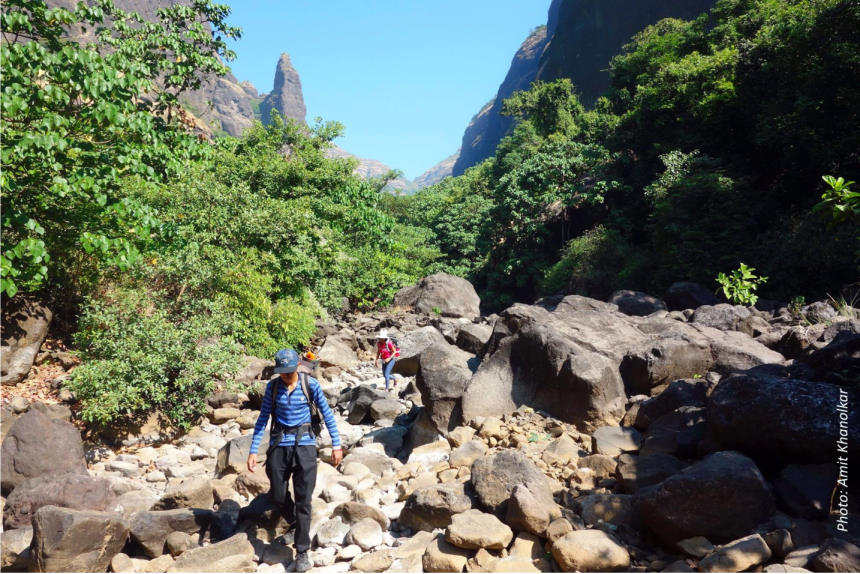
Hiking socks
There are many types of fabrics that are used for making socks for endurance activities like running, hiking and mountaineering. In addition to functional aspects like ability to wick away moisture, cushioning quality and warmth, some more factors that are considered for deciding a fabric-mix for socks are strength, elasticity and how it functions when wet (with either sweat or water from streams/snow).
The tremendous research in fabric material has almost made cotton obsolete. But it is still the preferred material for people who are allergic to synthetic fabrics. Note: cotton socks tend to lose their shape when wet and bunch up to form creases that increase the chance of blisters forming in those spots.
Question: While hiking, one pair of socks or two?
Answer: Depends! Here are the considerations for both:
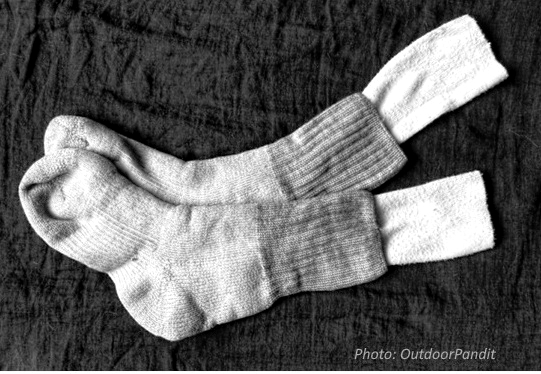
Two pairs
- Inner pair of socks wick away moisture (i.e., sweat) from feet
- Two layers of fabric help reduce friction between feet and footwear, which helps in reducing chances of blisters forming
The inner sock should be thin and be effective in wicking away moisture. The outer sock can be thicker to provide cushioning as well as warmth if being used in cold weather.
One pair
Many hikers have no problems wearing just one pair of socks, especially when they have well fitting footwear which they have broken in before using it on hikes.
Using one pair of socks is especially possible today when one chooses specialized socks that are manufactured with various types of fabrics and have extra padding in crucial areas like heels and balls of feet.
Tip: if you are walking in one pair of socks then carry a thin pair of socks with you, just in case you start developing hot spots on your feet (see the section on blisters for further explanation)
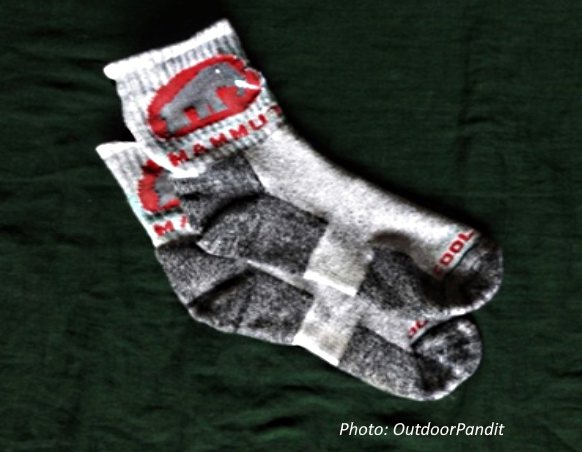
Camp socks
Any hiking day will see you reach camp with damp/wet socks. If it is not raining then it is normal for hikers to dry their shoes and socks in the sun and also to air their feet. This is the time to get into a different pair of socks for the evening while the hiking socks are drying off tethered to a tent’s guy-line. I keep these socks reserved only for camp use, and never hike in them. So, if it is raining when I reach camp then I just continue to wear my hiking socks and shoes, and avoid getting my camp socks wet. Camp socks can be thin or thick depending on cold conditions that you anticipate and how cold you feel in your feet.
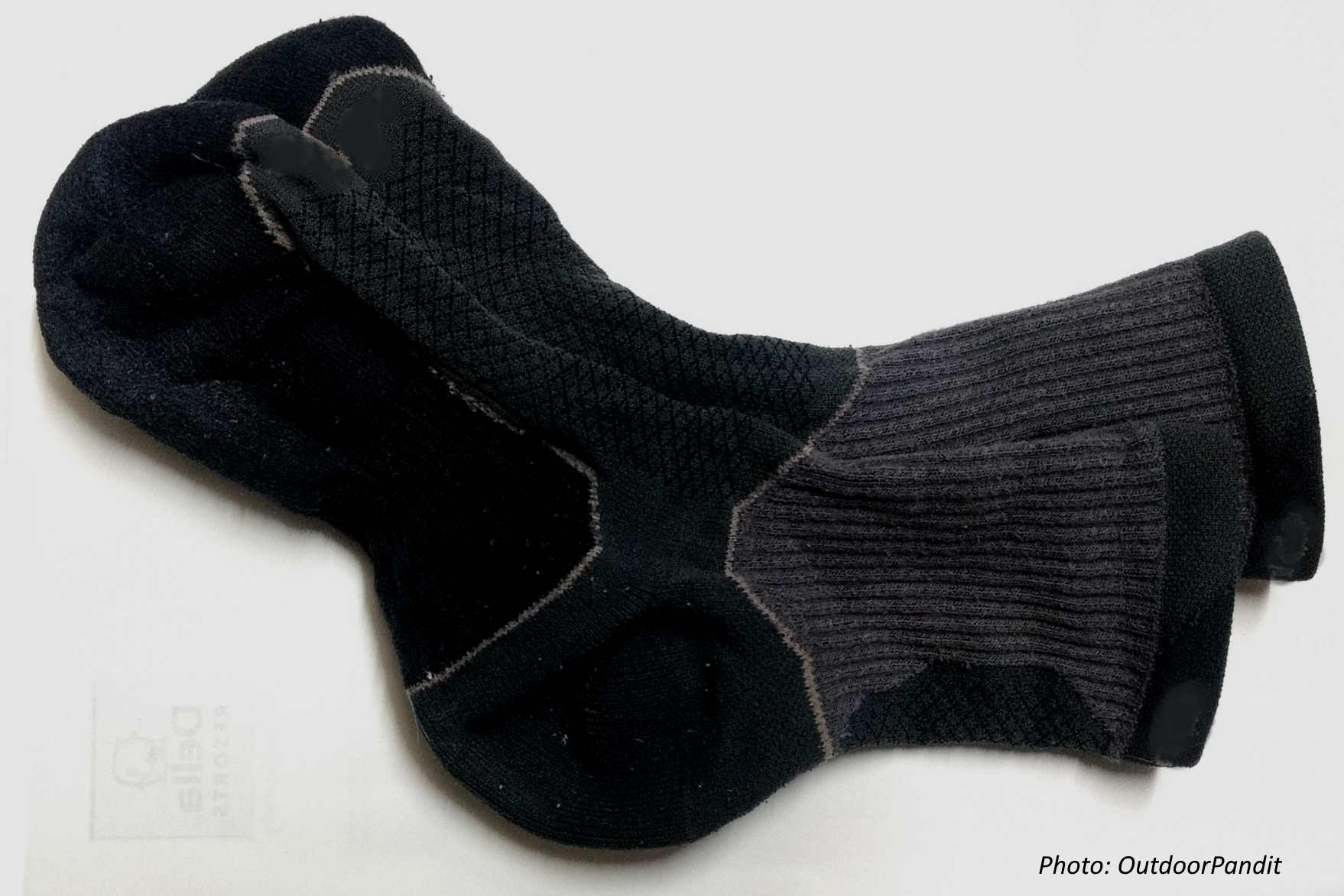
Sleeping socks
This pair of socks is also an exclusive pair, to be used only for sleeping in. Recommendation: this is the pair that should never ever get wet. In fact I pack this pair inside my sleeping bag each morning when I wind up camp so I am assured of a dry pair of socks to sleep in every night, and I know where they are just before getting into my sleeping bag! I normally choose simple woolen socks which do not make my skin itch. If your ‘sleeping socks’ are too tight then they will hamper circulation especially in your toes – remember blood distributes heat all over the body and helps regulate body temperature (For keeping sleeping bag dry in all sorts of weather conditions, read my post on how to pack sleeping bags).
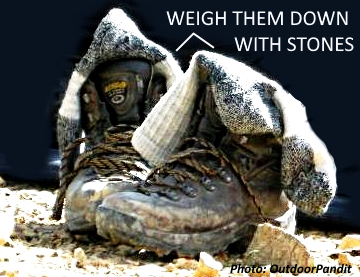
The best way to dry socks is to hang them out to dry in the sun. Be sure to anchor them down or they can simply gambol away in stray gusts of wind, perhaps to be lost forever. If it has been raining and you have not been able to dry them then place them around you, on you, when snuggled up inside your sleeping bag. Body heat gets them remarkably dry. It is important to air your sleeping bag out in the sun every few days: typically on a rock or a tent. Tether a drying sleeping bag to a tent or a robust plant – sleeping bags too can roll down a slope.
Click here for information that I have on hiking boots.
Click here for information that I have on basic footcare.
Click here for information that I have on blisters.
